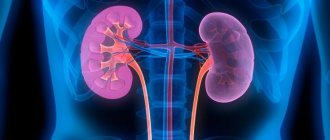Garlic has been used medicinally for 3,000 years. Its use has been documented by many major civilizations, including the Egyptians, Babylonians, Greeks, Romans and Chinese.
Modern science has confirmed many of the health benefits of garlic known since ancient times. At the moment, the following positive effects on the human body have been proven: prevention of cancer and atherosclerosis, lowering blood pressure, improving the condition of bones and liver function, preventing “age-related” diseases of the brain.
For the gastrointestinal tract
Garlic juice, when consumed as a raw vegetable, has an aggressive effect on the walls of the gastrointestinal tract. When consumed in moderation by a healthy person, such an irritating effect does not cause significant harm to the body. In people suffering from chronic inflammatory or erosive-ulcerative diseases of the digestive organs, garlic can cause an exacerbation of the existing disease and even perforation of the thinned walls of the stomach or intestines.
People with inflammatory diseases of the liver and pancreas should also not eat garlic: eating this vegetable can provoke an exacerbation of chronic inflammation or a painful attack.
Traditional medicines with garlic
Check out several recipes for traditional medicine based on garlic:
- For helminths. Grate or finely chop 2-3 cloves of garlic, mix with 500 ml of milk and boil for 15 minutes. Adults drink it all in one go. Give children no more than 1-3 tablespoons of the drug. You can also prepare an enema from milk and garlic (2 tsp garlic juice per 100 ml of milk).
- For warts. Prepare a mixture of garlic and honey in a ratio of 3:1. You can also prepare an ointment from grated baked garlic and butter. Apply to warts at night.
- For radiculitis. Prepare a compress from a grated head of garlic and a glass of grated black radish and apply it to your back. When it becomes difficult to endure, remove the compress, lubricate the area with sunflower oil and wrap it tightly.
- With a runny nose. Crush the garlic into a paste, pour in sunflower oil, mix and leave overnight. Place 2 drops in each nostril.
- For otitis. Mix garlic juice with water in a ratio of 1:10. Place 7 drops of solution into the previously washed ear. Keep it in your ear for 10 minutes and then wash it with warm water.
- For a sore tooth. Lightly crush a clove of garlic and rub it on the gum around the tooth that hurts.
- For the flu. Mix 8 drops of garlic juice with a tablespoon of warm milk. Take every three hours until you feel better.
As you can see, garlic can be both beneficial and harmful. But if you use it correctly, you will only get benefits from this product.
For blood clotting
People who take anticoagulants and antiplatelet agents should consume raw garlic in very limited quantities, since the spicy vegetable enhances their effect.
For the same reason, it is not recommended to eat garlic:
- women before and during menstruation;
- people before and after operations;
- patients planning to visit the dentist in the near future;
- persons with a tendency to increased bleeding.
The property of garlic to reduce blood viscosity can cause nasal, gastric, uterine or other bleeding.
Chemical composition, trace elements, calorie content and glycemic index
Garlic: chemical composition and nutritional value. Depending on the region, growing conditions, care, watering, processing, the chemical composition of the vegetable will differ. But the basic set of microelements, of which there are 17, will almost always be there. The most important substances for the healthy functioning of the body are shown in the table.
| Name | Content | Effect on the body |
| Molybdenum | 25.4 mcg | Speeds up metabolism |
| Copper | 0.13 mg | Saturates the blood with oxygen, thereby thinning it. |
| Potassium | 260 mg | Aimed at normalizing heart function |
| Sulfur | 63.6 mg | Destroys staphylococcus bacteria, pathogenic fungi, yeast. |
| Calcium | 180 mg | Strengthens bones, teeth, hair. |
| Phosphorus | 100 mg | Healthy teeth and muscle activity |
The biochemical composition of garlic is varied. The vegetable also contains other substances important for human health, but in smaller quantities:
- Selenium in garlic removes toxins and improves skin regeneration.
- Zinc is needed for the growth of muscle and bone tissue, as well as for brain function.
- Germanium - found in young plant stems. Fights varicose veins, improves the functioning of blood vessels.
- Iodine – thyroid gland and hormonal balance.
- Glucoside – activates insulin sensitivity.
- Pectin – relieves inflammation in the genitourinary system.
- Essential oils promote wound healing and trigger regenerative processes in the body.
- Zirconium – prevents the spread of infections and the formation of pus.
- Cobalt is a microelement against old age that prolongs the youth of skin, hair and internal organs.
The content of vitamins and microelements in garlic makes it an indispensable food product for adults and children.
The energy value of garlic depends on whether it is raw or heat-treated:
- raw garlic - calorie content 148.5 kcal,
- young shoots - 40 Kcal,
- vegetable arrows - 24 Kcal,
- calorie content of dried garlic - 345 Kcal,
- pickled heads - 42 Kcal, but significantly more salt than in a fresh product, which can lead to swelling
- salted - 91 Kcal,
- The least amount of calories in a baked vegetable is 16 kcal.
Garlic calories . 1 clove contains approximately 6 kcal, so people who are on a diet can indulge in such a healthy product.
BJU of garlic per 100 g:
- carbohydrates – 30 g;
- proteins – 6.7 g;
- fats – 0.4 g;
- water – 65 g;
- dietary fiber – 1.8 g;
- ash – 1.5 g
The vegetable is not contraindicated for people who monitor their blood sugar - it has a low glycemic index of 30.
Thus, due to its low calorie content and glycemic index, it is a dietary product.
Garlic cloves
For the brain
Garlic contains chemical compounds that inhibit brain activity, in particular the sulfone-hydroxyl ion. This chemical has the ability to penetrate the blood-brain barrier and have a depressant effect on the brain matter.
The effect of sulfone ion on brain activity was studied back in the 50s of the last century, when large-scale tests were carried out on pilots. Research has found that the reaction speed of pilots who ate garlic before the flight was several times slower than the reaction speed of those colleagues who refrained from eating this vegetable before the flight.
Benefits of garlic
Garlic contains a lot of useful things: vitamins B and C, potassium and iodine, essential oils, and much more. Despite the rather high calorie content - 149 kcal per 100 grams of garlic, its consumption will not affect weight, since no one eats it in such volume anyway. But there is one caveat - it can increase appetite quite well. Due to the content of phytoncides in the plant, which protect it from all kinds of bacteria, garlic is useful to add to food as an antiparasitic and bactericidal agent. Studies show that people who regularly added garlic to their diet were significantly less likely to get sick than those who neglected it altogether. Garlic also helps with the proper functioning of the heart and blood vessels. Therefore, people who add this vegetable to their food thereby stimulate hematopoiesis and lower blood pressure. In addition to this, they also reduce cholesterol levels in the blood and the possible risk of blood clots in the blood vessels.
benefits of garlic
Garlic also provides noticeable benefits to the male body, because good vascular condition is important for rapid blood flow to the organs. Consequently, sexual function in the stronger sex returns to normal. Garlic also affects testosterone production, which is also important for men. Studies have shown that garlic is a remedy that has a preventive effect against cancer. And all thanks to allicin, a compound that the plant contains. This is what gives garlic its well-known specific smell. The substance itself is not absorbed by our body, so it is eliminated from it, including through breathing. And so, passing through the respiratory tract, allicin prevents the risk of infectious processes, as well as the occurrence of cancer in the lungs.
For immunity
In addition to its immune-strengthening effect, garlic can cause allergic reactions, provoking the immune system to respond. Doctors believe that the immune system reacts to allicin contained in the vegetable, a sulfoxide compound formed when garlic cells are mechanically damaged.
In some sensitized people, a reaction to garlic may manifest itself in the form of a rash, itching, redness of the skin, as well as other severe cutaneous and non-cutaneous manifestations. Particularly sensitive people with allergies can react to garlic with an attack of suffocation, Quincke's edema, or anaphylactic shock. These conditions are life-threatening and, without proper emergency care, can lead to death.
Harm of garlic
If a patient has serious cardiovascular diseases, then it is not recommended to use garlic as a panacea, since in this case it can only harm the body. Yes, the substances in garlic promote vasodilation and blood flow to the heart, but with some heart problems this may only have a negative effect in the form of the following symptoms:
- chest pain,
- lack of air, suffocation,
- interruptions in the rhythm of the heart,
- tachycardia,
- migraine,
- general poor health.
It is also worth considering that garlic is almost immediately absorbed by the human body, which means its effect on the heart will be immediate. Therefore, if you suffer from interruptions in heart function and increased heart rate, then it would be best to completely exclude garlic from your diet. Otherwise, you risk triggering an attack of tachycardia and arrhythmia, which can lead to a heart attack. Also, if you nevertheless ate garlic and felt that you felt ill, we recommend that you immediately consult a doctor to exclude the possibility of negative consequences.
harm from garlic
For pregnant and lactating women
Garlic is a product that can cause allergies. The body of a pregnant woman has increased sensitivity to various allergens. The immunity of a woman expecting a child is constantly under strain, so during this period you should avoid eating foods that have pronounced sensitizing properties.
It is especially dangerous to eat garlic (even if a pregnant woman is not allergic to it) before giving birth. The ability of this vegetable to reduce blood viscosity before delivery can provoke complications during childbirth such as bleeding. Nursing mothers should also not eat this spicy vegetable. Vegetable phytoncides enter breast milk, changing its taste (milk begins to taste bitter) and provoking allergic reactions in the newborn.
How to choose and store correctly
Fresh garlic has the best taste and nutritional value. When choosing a vegetable, it is important to pay attention to the integrity of the husk. If you squeeze the prong lightly with your fingers, it should be dense and hard. It is better to avoid soft heads, wrinkled ones, with mold, as well as those that have begun to sprout. The taste and benefits of such a vegetable are minimal. But size is not an indicator of the quality of garlic.
It is better to store the vegetable in a cool place, protected from light and heat from the sun. This will help maintain freshness and prevent the garlic from sprouting.
Do not store the product in tightly closed containers, for example, in the refrigerator or freezer (this will worsen its taste and structure).
Scoville quantity
In 1920, using organoleptic means, Wilburm Scoville figured out how to measure the hotness of pepper and created a special scale. The Scoville scale is used to rate the heat of peppers. It is based on the amount of capsaicin in the vegetable, which gives pepper its unique hot taste. It presents the hottest peppers from around the world such as chili, tabasco, jalapeno, bird's eye or dragon's breath.
Now this table is very popular and therefore many people ask how many Scovilles are in garlic? The vegetable also has its own pungent taste, but it cannot be found on this scale since it does not contain capsaicin . Organic sulfides (thioesters) give it a pungent taste, the most “spicy” of them is allicin, which is formed only when the tissues of the vegetable are destroyed mechanically.
Compound
Garlic is a type of herbaceous plant of the onion genus, as well as a food product and seasoning.
Source Wikipedia
It includes:
- Protein;
- Vitamin C;
- Sahara;
- Polysaccharides.
Its taste and smell are due to the presence of essential oil, which contains allicin and other organic compounds.
Allicin is an essential oil of garlic, an organic substance that is a strong antioxidant, i.e. it rids cells of free radicals. It has antimicrobial, expectorant, sap and irritant effects.
Garlic is rich in potassium, calcium, phosphorus, iodine, manganese, selenium, the importance of which for the body is great. Selenium promotes the production of thyroid hormones. Manganese is involved in many internal processes. Vitamin B6 has a positive effect on the functioning of the central nervous system.
Customer Reviews
Garlic helps rejuvenate the body and cleanse the blood. What do people who have tested these properties on themselves say about this?
Feedback on the forum
Feedback on the forum
Feedback on the forum
Feedback on the forum
Feedback on the forum
There are many reviews and they are all positive.











